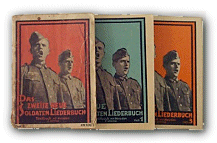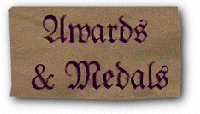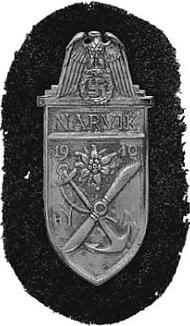| Local news: Altoetting
(Bavaria)
Gebirgsjäger Present
their Comradeship
110
participants and many guests of honor at the meeting in Weissbraeu -Graming
- Thanks to the organizer Franz Staar Altoetting (local editorial office).
For the eleventh time Franz Staar called his former mountain comrades of
the regiment 91 / 4th Mountain Division to the "Weissbraeuhaus" in Gramig.
50 persons had already met at the
reunion which took place at the evening before. They saw a slide show of
Robert Tiefenthaler, which was a review of the years from 1941 to 1945
and the strenuous route of the 4th Gebirgs-Division, and it also showed
pictures of the meetings from the 1985 on until 1995 in Altoetting und
Baisweil (Oberallgaeu, Bavaria) as well as of the journey in the year 1993
to Noworossijsk. Altogether here were 110 participants.
The ceremony was inaugurated by the
organizer Franz Staar, who expressed his delight about the great number
of participants.
He welcomed the representative of
the district administrator, Alfred Loibl, the second major of the town
Altoetting, Wolfgang Sellner, the major of the community Kastl, Sebastian
Haider, the patron of the day, Major Dr. Franz Seebacher from Graz, Hauptmann
Dr. Hansemann, Graz, the leader of the battalion, Hauptmann Rudolf Goettinger
from Munich, Oberleutnant Luschner from Amberg, and the eldest of this
group with 90 years, Hauptmann Dr. Teschemacher from the Taunus, as well
as Oberleutnant Fritz Gottesheim from Wuppertal and the
assistant medical director of the battalion,
Dr. Franz Kraus.
Dr. Seebacher as the patron of the
event honored after his speech those comrades which deceased since the
last meeting and commemorated those which were killed during the war.
Hauptmann Hansemann thanked for the
invitation and said that he was very happy to be able to share some time
with his former comrades, too. The representative of the district administration
Alfred Loibl expressed his delight that he could attend that meeting the
fourth time. Staar should
reconsider his announcement to organize the meeting
the last time. At the fifth time he and mayor Sellner could present a gift
to Franz Staar - for the "little" anniversary.
"Without responsibility for each
other", said Loibl, "without faithfulness for each other, without the goodwill
which over bridges the frontiers of nations, without passionate dedication
for the justice of
nations among each other our wealthy would be
risked and our future uncertain."
The greeting speech of the 2nd mayor
Wolfgang Sellner began with the words "enemies became friends". The younger
generation had no right to pass judgement on the past, as it had happened
at the exhibition in Munich. "We should speak with your words and admonish
to aim for peace,
and what we miss today in politics is comradeship
and solidarity!". In the sequel of the event there were further honors
for faith to the comradeship and the achievements for the organization
of those meetings.
|




















